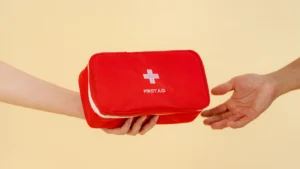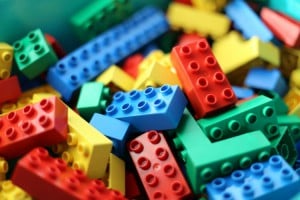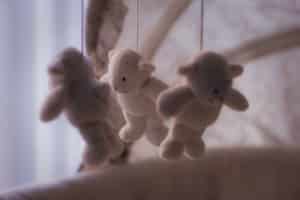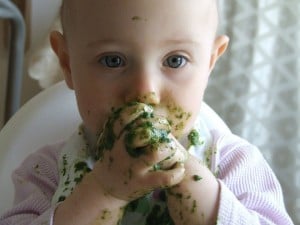Hello Parents,
I’m back today with important information about emergency situations that can happen with a young child. In this article, I will talk about preventative steps you can take to avoid circumstances that can danger your baby’s life.

Every parent is concerned about their child’s health and wants to keep them as safe as possible. Karl, an ambulance paramedic, has come in to provide you with more practical information than I can. Karl was trained as a first-aid teach by the Quebec Heart and Stroke Foundation, and works with future and new parents, and has seen how these preventative steps can change lives.
You can also read the article about choking, suffocation and strangulation for additional information. There is also information about cardiac arrest, because yes, you can make a big difference for your baby!
 Get yourself a first aid kit with a rectal thermometer or without a rectal thermometer, approuved by Karl from Formation Vitalis.
Get yourself a first aid kit with a rectal thermometer or without a rectal thermometer, approuved by Karl from Formation Vitalis.
Expert advice and preventive things you can do to avoid emergency situations for young children:
Karl and I have decided to divide suffocation, choking, strangulation and cardiac arrest prevention based on a child’s age. We focus on the first year of life (under 12 months). For sudden infant death syndrome (SIDS), you can read the article about the topic.
-
For a baby under 2 months
- A crib that meets current government standards is the safest place for babies to sleep. Cribs manufactured before 1986 or ones lacking a manufacturer’s label (name, number or model name, manufacture date, assembly instructions, and a warning about the mattress dimension and use of the crib) are not safe. Please read my article about choosing a mattress for babies for more information
- Regularly check the crib to make sure that all the pieces are tight, especially after moving it
- Avoid soft sheeting, bumpers and stuffed animals. The mattress should be firm and adjusted
- Make sure the child sleeps on their back
- Don’t sleep with a baby or have them sleep in an adult bed, on a couch, recliner or air mattress
- Avoid toys with strings or pull ropes longer than 20 cm (8 inches), baby necklaces and knit bibs

- Use one-piece pacifiers and replace them every two months rather than waiting for signs of damage. Don’t hang the pacifier around a baby’s neck; use pacifier holders with short ribbons
- Tightly attach straps when your baby is in their car seat, baby carrier, jumping seat or swing. Always use the crotch strap. Never leave your baby asleep in their car seat or stroller without supervision.
-
For a baby from 4-6 months
In addition to the above security measures:

- Always be on the lookout for choking hazards in the house. Vacuum or sweep the floor frequently and be very attentive when guests or older children are around
- Avoid suspended toys or mobiles above the crib when the baby reaches four months or when they can raise themselves with hands or feet
- Make sure the crib is distanced from blinds or curtain cords
- Cut or tie blind or curtain cords in a way that they can’t be reached by your baby
-
For a baby from 6-12 months
In addition to the above security measures:
- Always stay in arms reach of your baby during meals
- Replace the pacifier with a teething ring if the baby starts biting it
- Frequently check floor and furniture surfaces and the space between cushions to remove any choking dangers, especially after having guests over

- Check and respect toy age and safety recommendations
- Avoid clothing with neck or waist cords. During the winter, use a neck warmer rather than a scarf, and mitten clips rather than those attached with a cord
- Avoid leaving animal food on the floor between their meals
- Tie plastic bags before storing them safely out of reach and sight
- Also, if your child is growing and is more mobile, there are other choking risks you need to be aware of. Here is a short list of foods to avoid before 4 years of age, and foods you need to carefully prepare before giving them to your child.
Foods to avoid before 4:
- Hard candy, cough drops
- Peanuts
- Sunflower seeds
- Fish with bones
- Snacks on toothpicks
Foods requiring special care:
- Grapes: cut them lengthwise
- Hot dogs and sausages: cut them lengthwise
- Raw carrots, apples: cut into large pieces and peel them
We hope this information will help you prevent certain types of emergency situations. Don’t forget to read the full article called Parents and First-Aid for Babies.
And please watch the live video about first aid for babies I filmed with Karl. (in french)
Thank you, Karl!
Talk soon,
Marie
The Baby Expert


